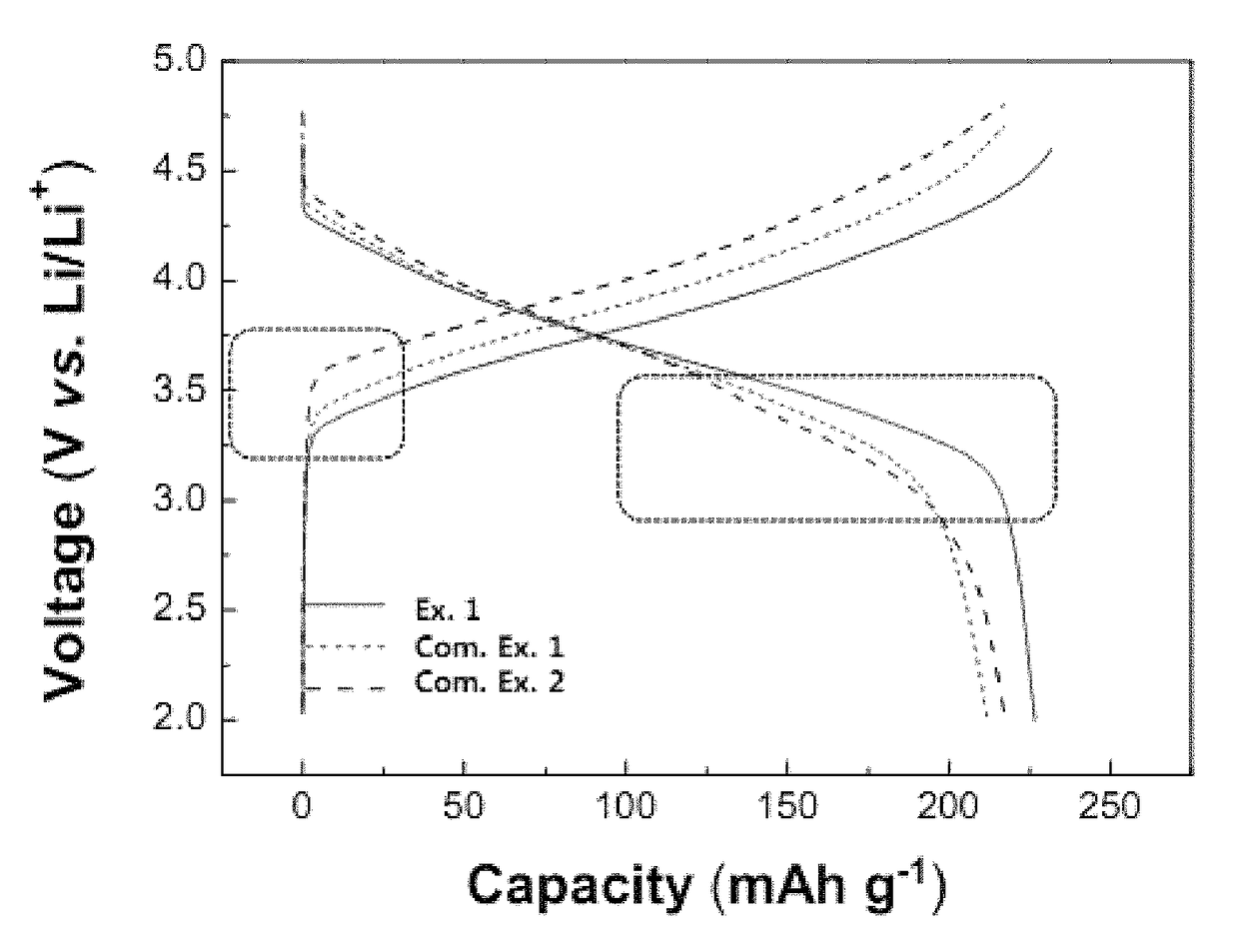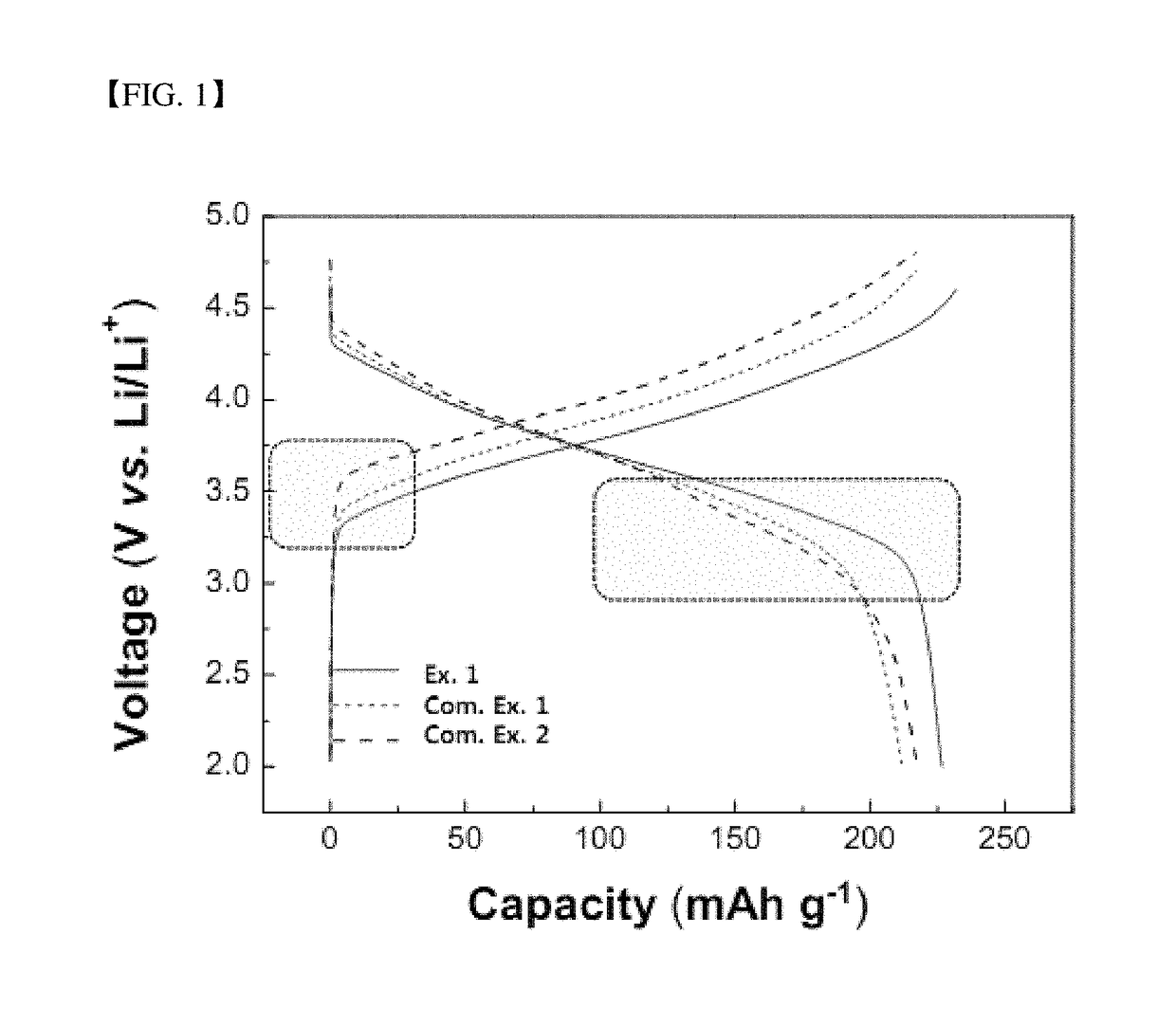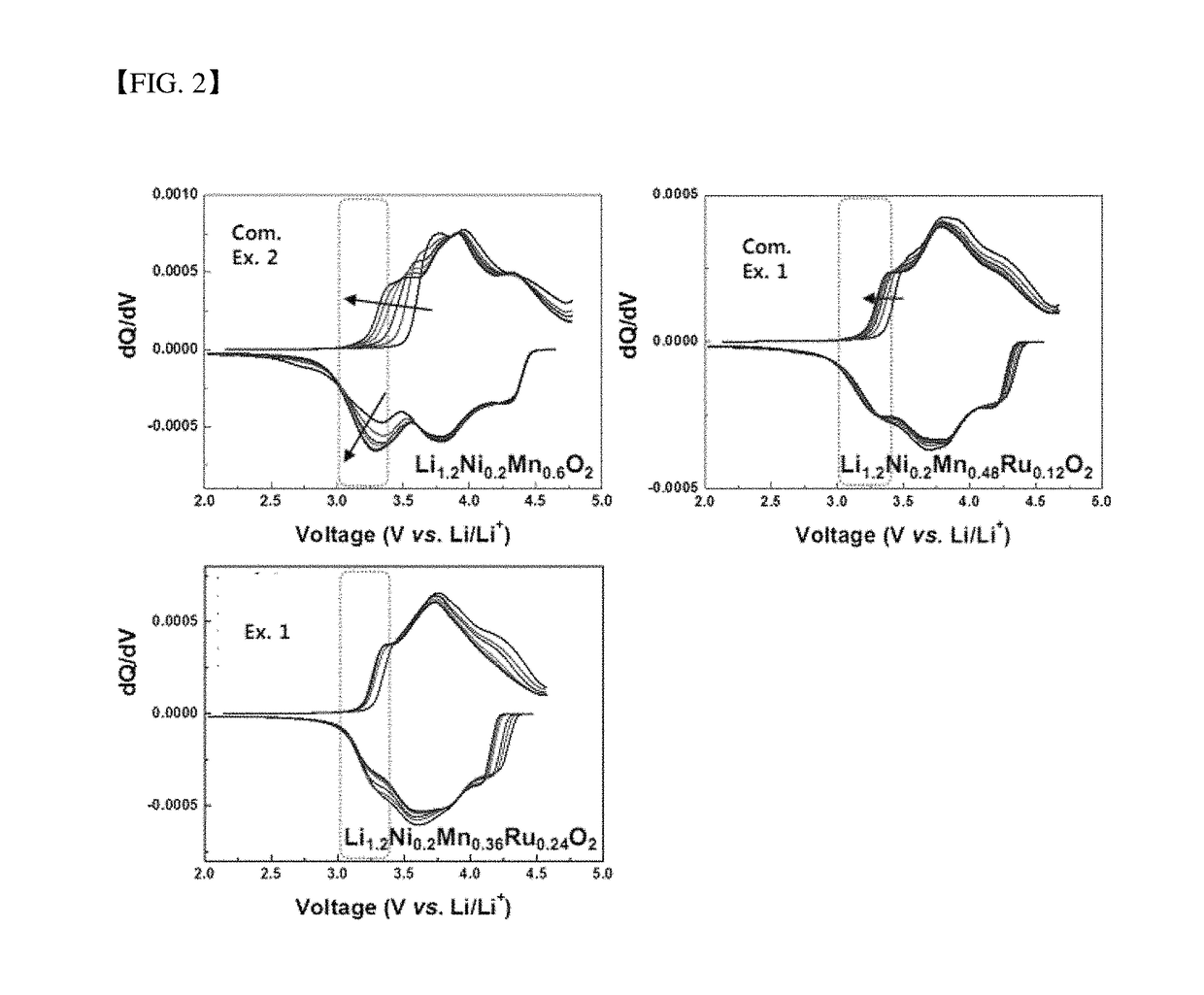Positive electrode active material and lithium secondary battery including the same
a lithium secondary battery and active material technology, applied in the direction of batteries, nickel compounds, cell components, etc., can solve the problems of low price competitiveness, low structural stability, and low licoosub>2 /sub
- Summary
- Abstract
- Description
- Claims
- Application Information
AI Technical Summary
Benefits of technology
Problems solved by technology
Method used
Image
Examples
experimental example 1
[0061]7 weight % of denka black, as a conductive agent, and 6 weight % of PVDF, as a binder, were added to 87 weight % of the positive electrode active materials manufactured according to Example 1 and Comparative Examples 1 and 2 to manufacture positive electrode active mixtures. NMP was added to the manufactured positive electrode active mixtures to manufacture slurries. The manufactured slurries were applied to positive electrode current collectors, and were then pressed and dried to manufacture positive electrodes for secondary batteries. Porous polyethylene separators were interposed between the positive electrodes and negative electrodes based on lithium metal, and then lithium electrolytic solutions were injected to manufacture coin type lithium half-cell batteries.
[0062]The results of charge and discharge in second cycles of the coin type lithium half-cell batteries are shown in FIG. 1.
[0063]Referring to this figure, it can be seen that the battery according to Example 1 exh...
experimental example 2
[0064]The lithium half-cell batteries manufactured according to Experimental Example 1 using the positive electrode active materials manufactured according to Example 1 and Comparative Examples 1 and 2 were charged and discharged up to seventh cycles. Capacity differentiation curves in second to seventh electrochemical cycles of the batteries are shown in FIG. 2.
[0065]Referring to this figure, it can be seen that the battery according to Example 1 has a lower activation level in a colored portion in a dotted-line box than the batteries according to Comparative Examples 1 and 2, whereby a voltage sagging phenomenon is reduced even when a plurality of charge and discharge cycles is performed.
PUM
| Property | Measurement | Unit |
|---|---|---|
| temperature | aaaaa | aaaaa |
| thickness | aaaaa | aaaaa |
| pore diameter | aaaaa | aaaaa |
Abstract
Description
Claims
Application Information
 Login to View More
Login to View More - R&D
- Intellectual Property
- Life Sciences
- Materials
- Tech Scout
- Unparalleled Data Quality
- Higher Quality Content
- 60% Fewer Hallucinations
Browse by: Latest US Patents, China's latest patents, Technical Efficacy Thesaurus, Application Domain, Technology Topic, Popular Technical Reports.
© 2025 PatSnap. All rights reserved.Legal|Privacy policy|Modern Slavery Act Transparency Statement|Sitemap|About US| Contact US: help@patsnap.com



